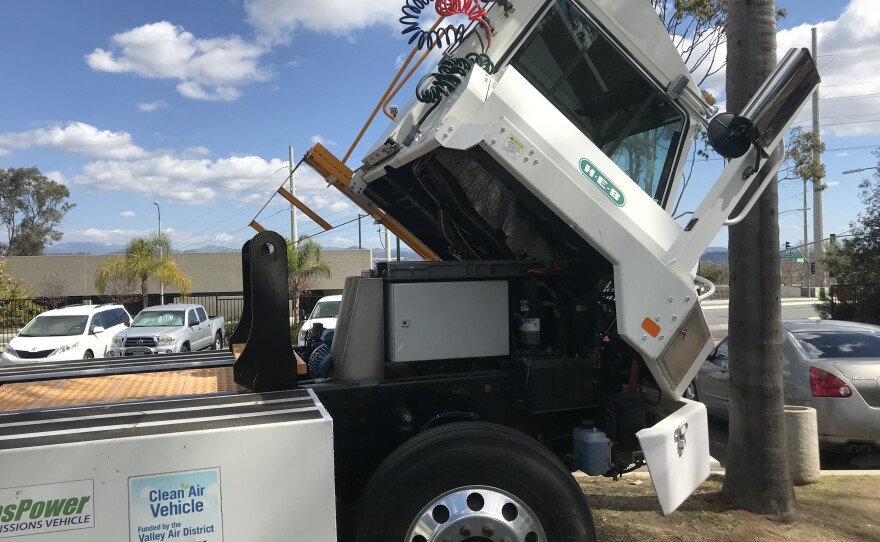The Port of San Diego will consider a plan Tuesday that aims to reduce the amount of pollution portside businesses put in the air. The draft policy, however, isn’t getting a warm reception from community advocates.
Critics say the staff recommendation fell short of what the port commissioners asked for publicly in March.
They praised the focus on clean air and environmental justice but quibbled with the fine print.
“When you get into the details," said The Environmental Health Coalition’s Danny Serrano. “The MCAS goals and objectives the meat of the document it is clear that it is inadequate and will not significantly alter or change the "business as usual" environment at the port.”
The port plan needs to be specific about goals, timelines, and how the Port will get there and his organization is pushing for aggressive goals, according to Serrano.
Diagnosed with asthma
Silvia Calzada says it was scary when her doctor first diagnosed her asthma seven years ago.
“When your airways shut down and then you can’t breathe ... that’s very difficult and you get a lot of anxiety,” the National City resident said.
Calzada has deep family roots in the San Diego community.
“My great grandmother lived here. My grandmother currently lives here,” Calzada said.
She remembers living by paint shops and seeing trucks rumbling through her neighborhood.
“In the area where we lived at there were a lot of trucks passing by and you could smell that diesel popping out and that affects our bodies,” said Calzada. “And just here in Paradise Creek, there were other trucks passing by and that smoke is out there.”
And the trucks are easy to find, even today: 18-wheelers regularly roll in and out of the port’s marine facility in National City just a half-mile or so from Calzada’s Paradise Creek home.
She is working with her neighbors to convince the port there are alternatives to diesel.
RELATED: Port Of San Diego Weighs Including Environmental Justice In Master Plan
And back in February, the Port took a big step in that direction.
The panel ordered staff to develop something called a Maritime Clean Air Strategy.
Port officials wanted more than a spirited discussion in a boardroom.
“What’s the plan?” said Michael Zuchett, the chairman of the board of port commissioners. “How are we going to do this? How are we going to transition in a way that maintains the economic activity? Maintain the good, but limit or in some cases eliminate the negative impacts on the surrounding communities with respect to clean air.”
Commissioners directed staff to put those ideas in writing.
RELATED: Scientists: Up To 25,000 Barrels At DDT Dump Site In Pacific
The members asked for a policy that had specific, measurable goals with clean air targets and the mechanisms to enforce compliance.
The challenge lies in balancing two port objectives.
“A focused effort which is primarily the next generation of how we are going to address clean air and be a good neighbor while at the same driving forward the economy of the port business at the Port of San Diego,” said Jason Giffen, Port Vice President of Planning, Environment and Government Relations. “It is essentially going to be a policy document that will settle foundation in writing what will be the Port’s initiatives and strategies moving forward.”
But the resulting draft document got a cool reception from community advocates.
RELATED: Scientist Decode The Physics Of Wave Surfing Pelicans
The port needs to electrify its on-terminal operations and expand that off-terminal, Serrano said.
“Develop a clean trucks program by the end of this year, 2021,” Serrano said. “With a clear and phased plan and strategies to transition 30 percent of the fleet to zero-emission vehicles by 2023 and 100% by 2030.”
And the port seems receptive.
“I think this is an example of a public agency not just putting a document out for comment by the public and then doing what they want anyway. This is an example of an agency putting a document out,” Zuchett said. “We got a lot of public comment; we’re going to be responsive to that comment.”
The Port is expected to compile the public comments and come back to the commissioners for approval sometime this summer.








